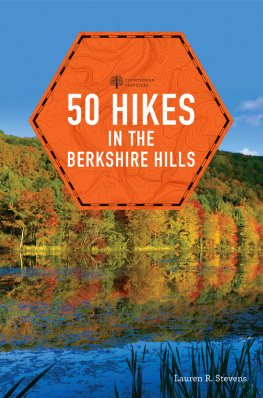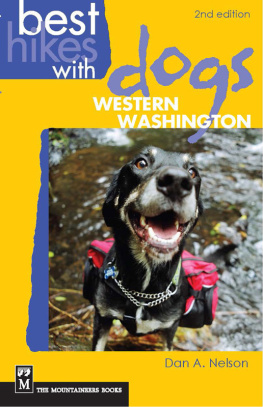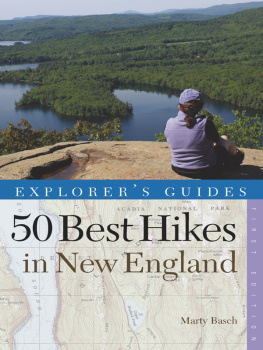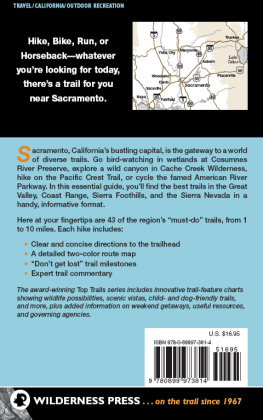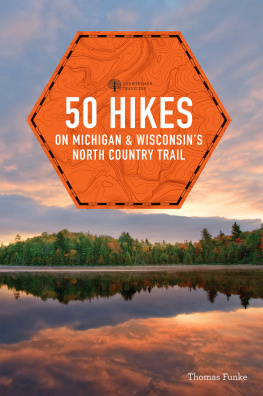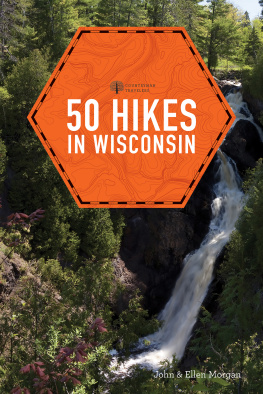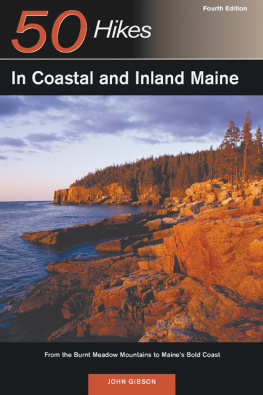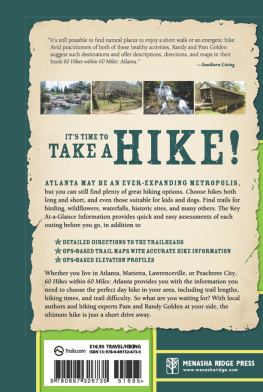

To my children and grandchildren
They, hand in hand, with wandering steps and slow,
Through Eden took their solitary way.
John Milton, Paradise Lost
Although Eden is changing, it can still be enjoyed.

Contents
T o the imaginative mind, every one of our beautiful Berkshire mountains invites the question of what lies beyond. The US Census Bureau declared the American frontier closed in 1890, but our personal frontiers remain countless. Thanks to foot trailsand to the fine book youre holdingyou can expand your horizons without spoiling the experience of discovery for those who follow.
Every trail will move you from here to there. The better ones will please you as you walk. The best will tell a story from start to finish, rich in detail, structured for tension and reward, packed with emotional power.
Peter S. Jensen, one of our countrys leading designers and builders of natural trails, began his practice in the Berkshires. Youll see his work at the Great Barrington Housatonic River Walk. Youll notice Jensens craft on portions of the trail up Monument Mountain. Walk his paths around Olivias Overlook and at Stevens Glen. Enjoy some of his finest work at Basin Pond in Lee, on the Old Mill Trail in Hinsdale, and high on the Hoosac Range up north.
Jensen is to trails in our time as Frederick Law Olmsted was to parks in his. Make yourself a connoisseur. Locate his trails, here in the Berkshires and farther afield, and make them part of your life.
But dont forget that Jensen and his fellow builders would have nowhere to work without their predecessors. From the late 19th century onward, visionary men and women saw that Berkshire County would need to protect its most essential natural lands if people, plants, and animals were to have a future worth living in.
These men and women saw thisand they did something about it. Thanks to them, at this writing, to wit 240,000 of Berkshires 600,000 acres will remain forever free from residential and commercial development. Groups ranging from town land trusts to governmental agencies care for these lands, doing all they can to ensure that these lands deliver benefits to you and me.
It is impressive but its not enough.
Our conservation lands are vast, but fragmented. You might walk to the horizon line, only to confront a fence or a No Trespassing sign that stops you from going farther. To honor and fulfill the work of the past, we must finish the job.
Berkshire Natural Resources Council has launched a campaign to create a continuous, uninterrupted trail network throughout the Berkshires.
We call this the High Road.
We envision loop upon loop, linking paths long and short to the towns, villages, and cities where most of us start our daily journeys.
Why travel to the Rockies for endless hikes? Why fly to Europe for an inn-to-inn walking holiday? Why not vacation here in the Berkshires?
This web of trailsthe High Roadwill connect our developed world to land set aside for clean air and water, wildlife, farming, forestry, flood control, scenic views, recreation, study, and adaptation to climate change.
Over time, we will work with families and institutional partners at every level to identify and secure the most critical land and trail connections needed to put the whole puzzle together.
It may take longer than our lifetimes to complete the Berkshire High Road. But we hope that some future edition of this book will not list 50 distinct hikes, but 50 highlights along an unbroken chain of pathways, each with its own story, each offering a new frontier to the imaginative walker.
Tad Ames
President
Berkshire Natural Resources Council
B erkshire County is unique, as far as I know, for the number and variety of day hikes through property open to the public, regardless of ownership, on well-maintained trails that are the pride of many hard-working organizations. This book tempts you to enjoy these trails, rediscover your natural habitat, and find a personal sanctuary in the beauty of the Berkshire landscape.
Perhaps with that in mind, neighbors often present this book as a welcome gift to newcomers. Although Berkshire claims many attributes, cultural and otherwise, an introduction to its trails is a gracious gesture.
I hiked every trail in this book during a concentrated period in the spring of 2015, so information is current as of that time. Many trails described here are new to the book; I have altered virtually all descriptions of those picked up from previous editions. All major waterfalls in the area are included, as are some out-of-the-way swimming areas. 50 Hikes in the Berkshire Hills offers a new perspective on the Berkshire hiking landscape.
LRS

W hether you want to spend an afternoon ambling through an azalea grove or take a strenuous day hike with sweeping vistas of five states, its tough to beat Berkshire County. For variety and tradition, few areas in the United States offer prospects as rich as those of western Massachusetts. Some of the routes described in this book move you inward, toward contemplation and quiet. As Henry David Thoreau said of the Bellows Pipe, his trail to the summit of Mt. Greylock: It seemed a road for the pilgrim to enter upon who would climb to the gates of heaven. Furthermore, he testified that he found Heaven on the summit. Other routes, beside brooks dropping many feet or along rocky ridges fringed with firs, may inspire you to shout with joy. Through them all, you will absorb the rhythms with which previous generations have trod, and enjoy being at one with ancients known and unknown, famous and infamous. The old carting roads, stone walls, cellar holes, and apple trees in the forests all have their stories.
The number of public trails on protected land in Berkshire is the product of numerous factors, probably the greatest being furniture making. Nineteenth-century loggers who provided wood from western Massachusetts for chairs and tables made in central Massachusetts tended to abandon their cutover areas rather than reforest them. The Commonwealth, concerned that it would run out of marketable timber, acquired the properties. The exodus of farmers to the west left more land to be acquired by tax taking. In the 1930s, the Civilian Conservation Corps was assigned to plant trees and create recreational amenities. Hence, the western end of the Bay State became weighted toward state forests and parks, so much so that in several towns the state owns more than half the land. Various land protection groups, such as Massachusetts Audubon and the Trustees of Reservations, and local land trusts (most notably their granddaddy, Berkshire Natural Resources Council), colleges and schools, municipalities, and other entities have added to the mix.
Most trails may have begun as Indian paths, carting roads, or logging roads. Just about every Berkshire stream once had a road beside it. They have been marked and kept open for hiking over the years, with re-routing as required, because their river neighbors eroded them. More recently, the laying out and construction of trails has become more professional, with pathways following the topography rather than fighting it, and the heavy work done to move stone, create water bars, or cribbing almost invisible to most passers by. The result is to make the trail seem as naturaland manageableas possible.
Next page
